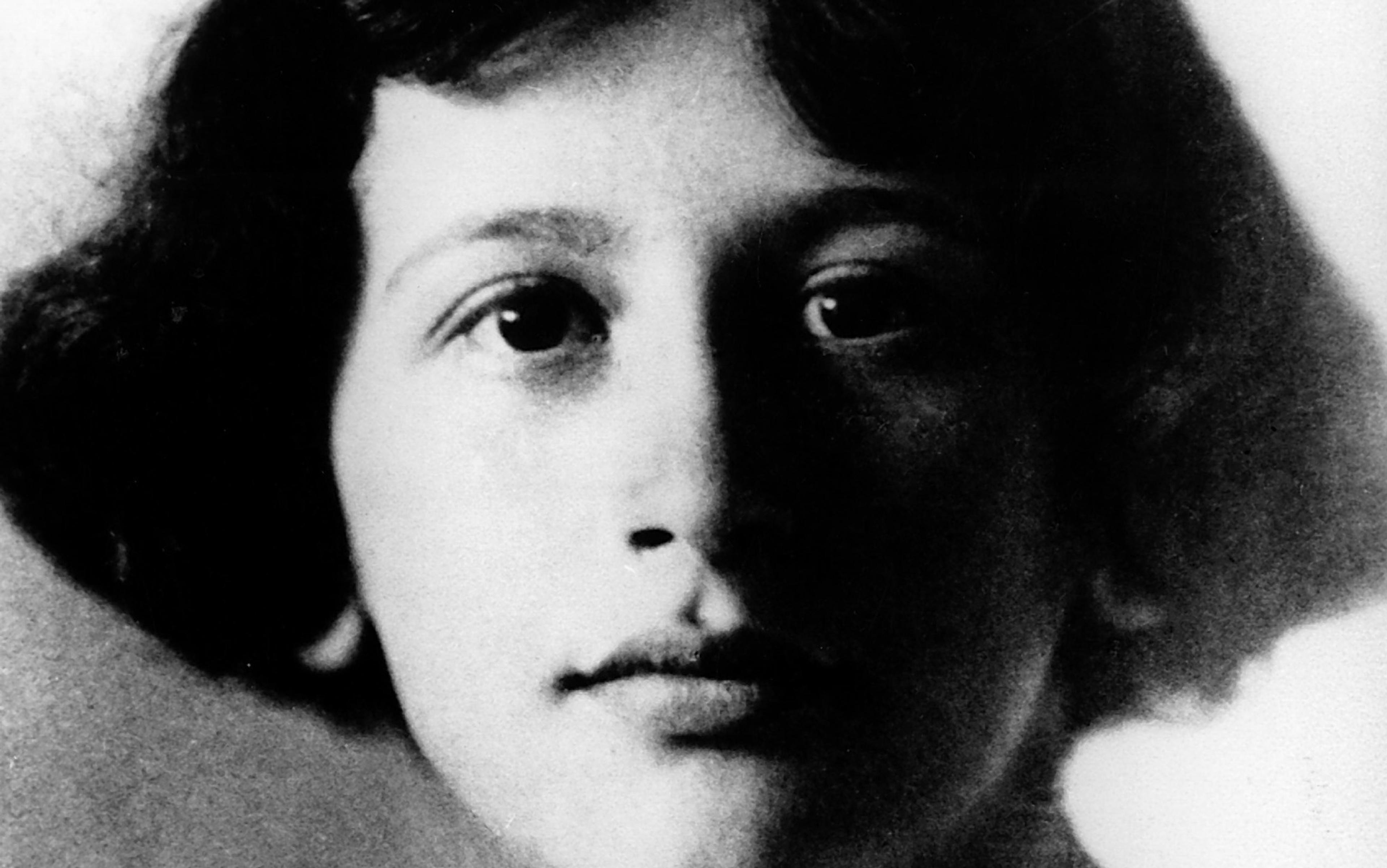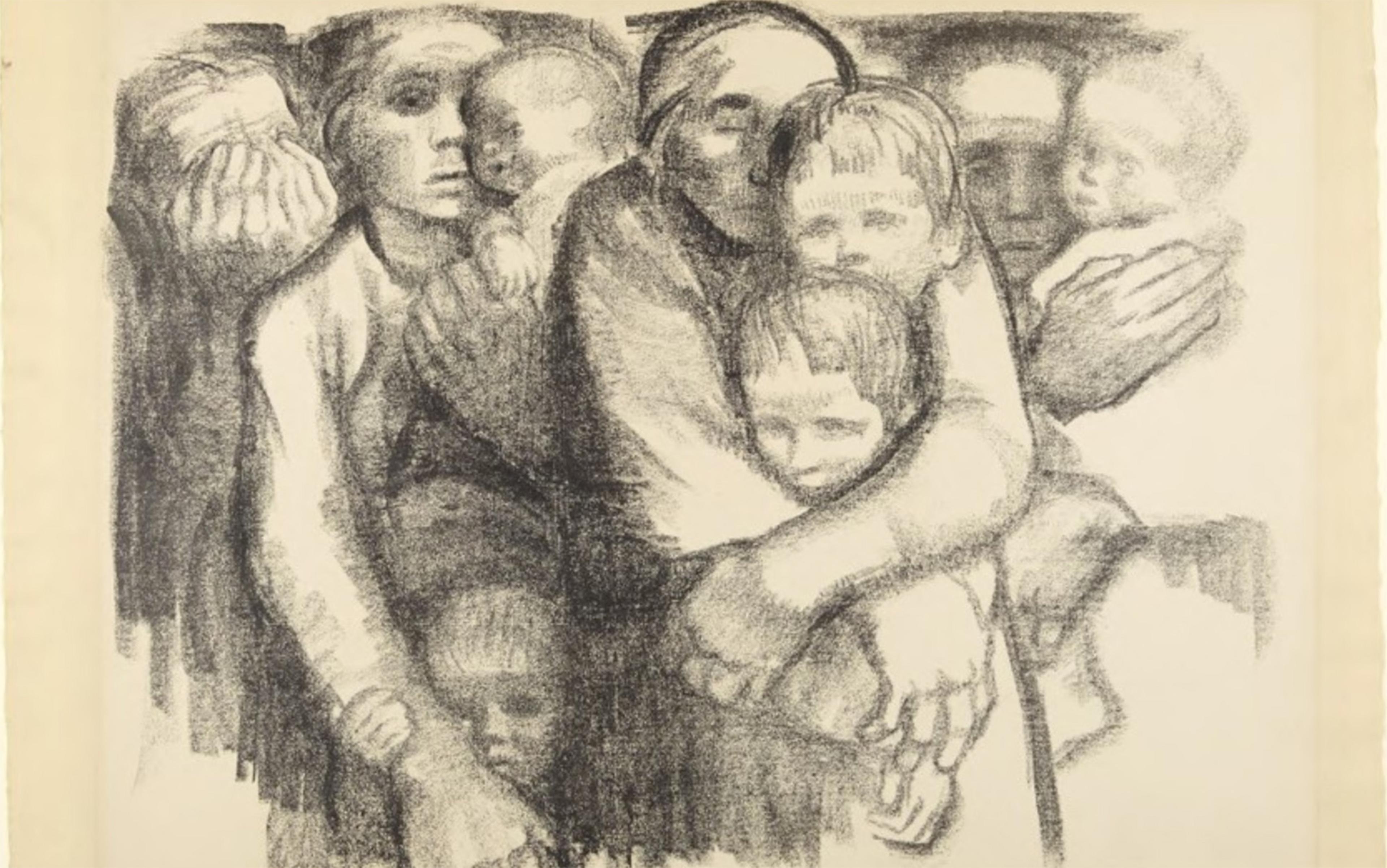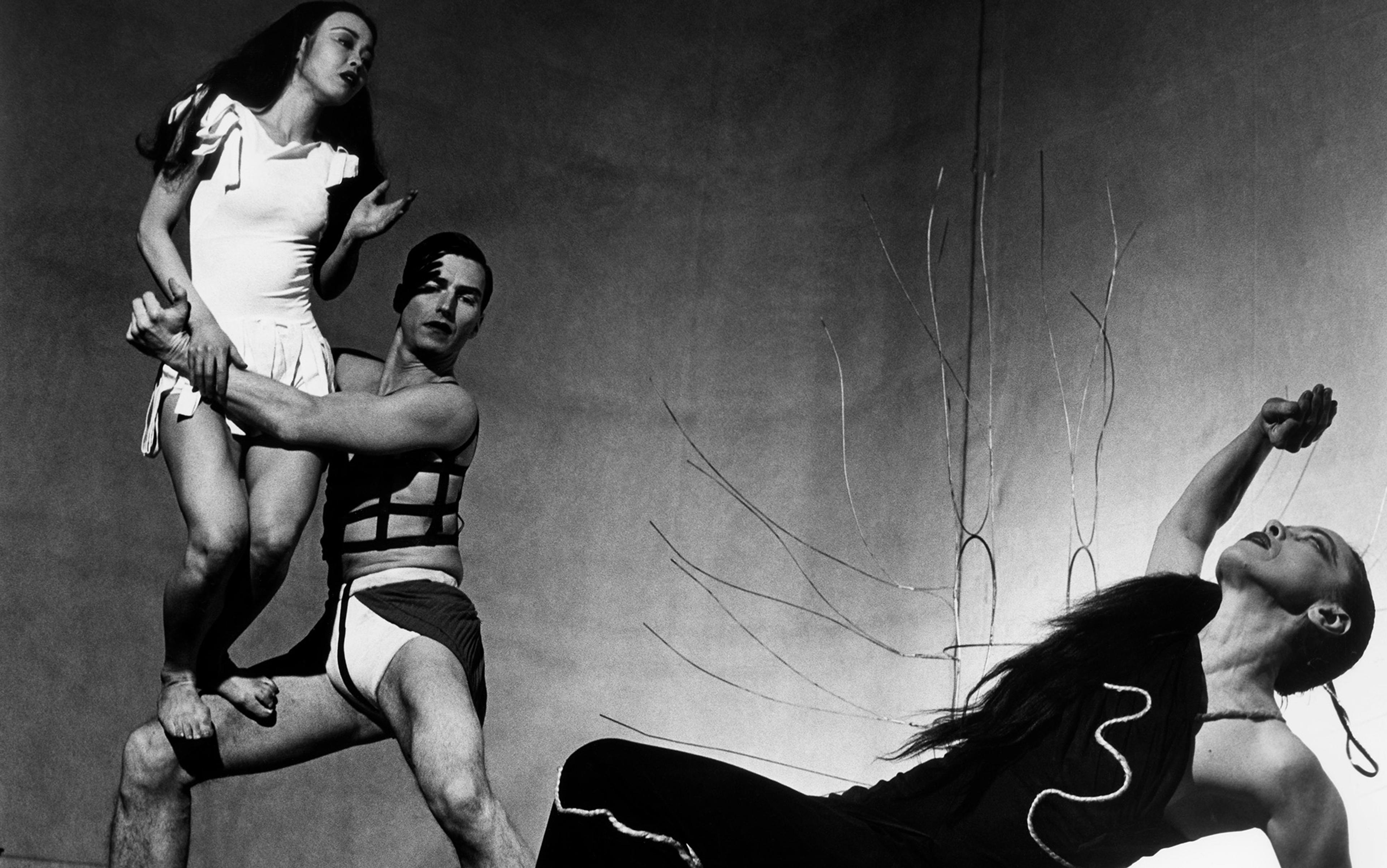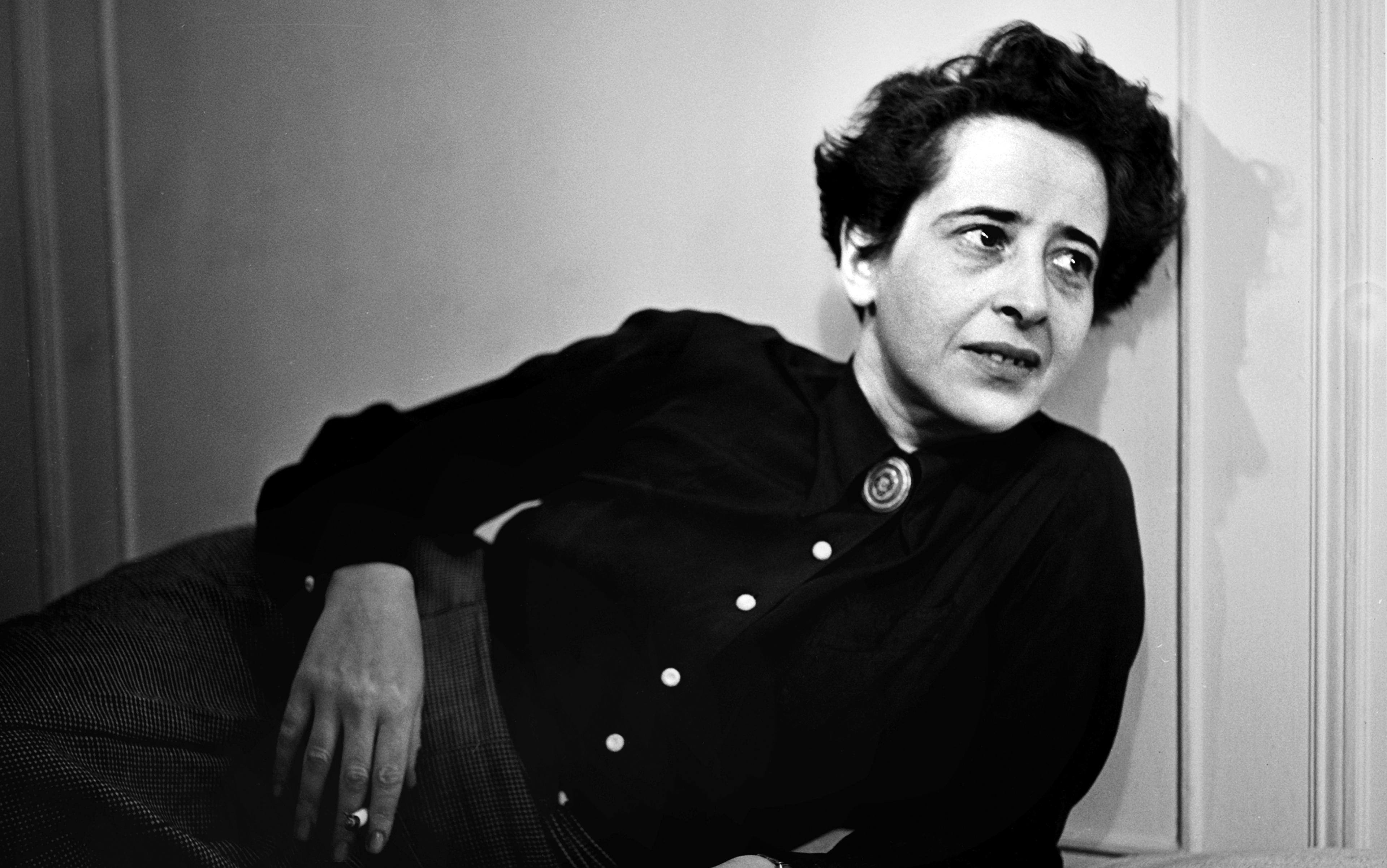Simone Weil (1909-43) belonged to a species so rare, it had only one member. This peculiar French philosopher and mystic diagnosed the maladies and maledictions of her own age and place – Europe in the first war-torn half of the 20th century – and offered recommendations for how to forestall the repetition of its iniquities: totalitarianism, income inequality, restriction of free speech, political polarisation, the alienation of the modern subject, and more. Her combination of erudition, political and spiritual fervour, and commitment to her ideals adds weight to the distinctive diagnosis she offers of modernity. Weil has been dead now for 75 years but remains able to tell us much about ourselves.
Born to a secular Jewish family in Paris, she was gifted from the beginning with a thirst for knowledge of other cultures and her own. Fluent in Ancient Greek by the age of 12, she taught herself Sanskrit, and took an interest in Hinduism and Buddhism. She excelled at the Lycée Henri IV and the École normale supérieure, where she studied philosophy. Plato was a lasting influence, and her interest in political philosophy led her to Karl Marx, whose thought she esteemed but did not blindly assimilate.
As a Christian convert who criticised the Catholic Church and as a communist sympathiser who denounced Stalinism and confronted Trotsky over hazardous party developments, Weil’s independence of mind and resistance to ideological conformity are central to her philosophy. In addition to her intelligence, other aspects of her biography have captured the public’s imagination. As a child during the First World War, she refused sugar because soldiers on the front could have none. Diagnosed with tuberculosis, she died at 34 when working for the resistance government France libre in London, refusing to eat more than the citizens’ rations of her German-occupied France. Teachers and classmates called her the Martian and the Red Virgin, nicknames suggestive of her strangeness and asexuality. A philosopher who refused to cloister herself behind academia’s walls, she worked in factories and vineyards, and left France during the Spanish Civil War to fight alongside the Durruti Column anarchists, a failed mission in many respects.
Several mystical experiences, including Weil’s discovery of the poem ‘Love (III)’ by the 17th-century poet George Herbert led her to embrace Christianity, and many have called for her canonisation as a saint. In her book Devotion (2017), the Francophile poet and punk-rock star Patti Smith described Weil as ‘an admirable model for a multitude of mindsets. Brilliant and privileged, she coursed through the great halls of higher learning, forfeiting all to embark on a difficult path of revolution, revelation, public service, and sacrifice.’ The French politician Charles de Gaulle thought Weil was mad, while the authors Albert Camus, André Gide and T S Eliot recognised her as one of the greatest minds of her time.
Weil’s best-known works – The Need for Roots, Gravity and Grace, ‘The Iliad or the Poem of Force’, Waiting for God, and On the Abolition of All Political Parties, all published posthumously – offer only snapshots of the philosopher’s wide-ranging diagnoses of societal maladies. Based on her notebooks, letters and published essays, scholars have traced compatibilities between her thought and that of philosophers such as Martin Heidegger, Hannah Arendt, Maurice Blanchot, Nikolai Berdyaev, Iris Murdoch, Giorgio Agamben, Maurice Merleau-Ponty, Michel Foucault, Gilles Deleuze, Quentin Meillassoux, Alain Badiou, Jacques Rancière, Emmanuel Levinas, Jan Zwicky, Meister Eckhart and John Rawls, to name just a few. Weil is a hinge between religious and philosophical thought, and her notebooks often do away with differences between them. All of her work constitutes an attempt to regenerate connective tissue between all disciplines, between culture and nature, science and art, and God and humans.
A Weil revival is underway, in part due to the surges in nationalism, populism, tribalism and nativism about which she had so much to say in her work. Weil, a firm believer in free thought, argued that: ‘The intelligence is defeated as soon as the expression of one’s thought is preceded, explicitly or implicitly, by the little word “we”.’ Uncritical collective thinking holds the free mind captive and does not allow for dissent. For this reason, she advocated the abolition of all political parties, which, she argued, were in essence totalitarian. To substantiate this claim, Weil offered three arguments:
1) A political party is a machine to generate collective passions.
2) A political party is an organisation designed to exert collective pressure upon the minds of all its individual members.
3) The first objective and also the ultimate goal of any political party is its own growth, without limit.
These tentacular organisations make people stupid, requiring a member to endorse ‘a number of positions which he does not know’. Instead, the party thinks on his behalf, which amounts to him ‘having no thoughts at all’. People find comfort in the absence of the necessity to think, she claims, which is why they so readily join such groups. In a resonant passage in The Need for Roots, Weil writes: ‘A democracy where public life is made up of strife between political parties is incapable of preventing the formation of a party whose avowed aim is the overthrow of that democracy.’
She would have sided with even the most detestable of speakers: thy enemy must be known
Weil supported the freedom of individual expression. (She believed, however, in certain speech restrictions for institutions such as newspapers and government propaganda offices that, as collectivities, were, for her, naturally suspect.) She writes that ‘complete, unlimited freedom of expression for every sort of opinion, without the least restriction or reserve, is an absolute need on the part of the intelligence’. The health of the intelligence relies on full access to the facts, and without it, thinking is always deficient. She would have sided with even the most detestable of speakers, if for no other reason than that thy enemy must be known.
Weil’s writings are infused with care. She believed it politically essential that every human soul feel ‘useful and even indispensable’ within the social body. She offers the example of unemployed people and manual labourers, who often feel little responsibility toward a society that does not embrace them. Regarding criminal justice, she believed in the redemptive power of punishment, arguing that it should ‘wipe out the stigma of the crime’ and offer an education to offenders, allowing for full re-entry into the community. Her care-infused recommendations for how to think of one’s nation could be edifying to consciences troubled by the confrontational nationalist movements of today. She wrote:
[The] poignantly tender feeling for some beautiful, precious, fragile, and perishable object has a warmth about it which the sentiment of national grandeur altogether lacks … A perfectly pure love for one’s country bears a close resemblance to the feelings which his young children, his aged parents, or a beloved wife inspire in a man. The thought of weakness can inflame love in just the same way as can the thought of strength …
Thinking of your nation as something vulnerable, something that must be nurtured, stands in contrast to the chest-thumping, hubristic barking of today’s ultranationalists. Weil’s political pliability could account in part for the surge of interest in her work. Perhaps we are looking for someone to lead us out of the forest in which we find ourselves, planted by the sowers of discord.
I reflected on my attraction to Weil’s thought, and on my habit of putting her books into the hands of my students and friends saying: ‘Read this.’ There are six reasons I return to Weil and want to share her: 1) the total absence of irony in most of her philosophical writings; 2) her sustained campaign against a self-interested, narcissistic citizenry; 3) the ethical urgency with which she approached the problem of education; 4) her emphasis on first-hand knowledge (of the assembly-line worker’s plight, for example, or the farmhand’s daily exertions); 5) her belief that technology’s distancing effects would lead to total alienation; and 6) the congruity of her preaching and her practice.
Weil’s emphasis on the ethical urgency of education and her pursuit of knowledge through direct experience both counter some of the worst traits of the academic humanities today. The strange proliferation of empty jargon and self-aggrandising theories, conferences and scholarly articles and books of dubious necessity, and the greed-fuelled transformation of houses of learning into houses of earning, all would have unsettled Weil. The precarious livelihoods of public schoolteachers and university adjuncts and lecturers would have bewildered her as well. Indeed, she keenly observed the connections between what was happening in the schools and in the factories: ‘The youth of our schools are as much obsessed by their examinations as our workmen engaged in piece-work are by their pay packets.’
I knew Weil was speaking my language when I came across this passage in her book The Need for Roots:
A lot of people think that a little peasant boy of the present day who goes to primary school knows more than Pythagoras did, simply because he can repeat parrot-wise that the Earth moves round the Sun. In actual fact, he no longer looks up at the heavens. This Sun about which they talk to him in class hasn’t, for him, the slightest connexion with the one he can see. He is severed from the Universe around him.
She described how those outside the intellectual class had been alienated from thinking, cut off from the great philosophy and literature of the past that caught the essence of what it is like to experience the world as a worker, a farmer, or a soldier. She hoped to restore these lost connections by introducing every person to history’s richest texts, particularly the Greek classics, which articulate what it means to fully inhabit the world. Weil would have appreciated Bryan Doerries’s Theater of War project, which brings Sophocles’ war plays to military and civilian audiences in the US and Europe in order to ‘forge a common vocabulary for openly discussing the impact of war on individuals, families and communities’. Weil also believed that by infusing every physical movement required by one’s trade with full, contemplative attention, one could become woven into the vocation and into the generation line of forebears who’d also practised it. The alienation produced by the mind-numbing repetition of meaningless gestures would hence disperse, and factory workers, farmers and other manual labourers would recover the dignity they’d lost in the industrial age.
To try to understand the appeal of Weil to a contemporary person, I took a close look at three examples from the first two decades of the 21st century, instances where her thought and life have been harnessed toward imaginative projects: Chris Kraus’s book Aliens and Anorexia (2000), Anne Carson’s collection Decreation (2005) and Julia Haslett’s experimental documentary An Encounter with Simone Weil (2010). Weil’s work seems to have a particular resonance with women. In part, the radical embodiedness of her thought – with its apparent inseparability from her afflicted body – appeals to women because it invites everyone to recognise what they likely already know: that the body, with all of its burdens and pleasures, is the precondition for all thought and creation.
Weil is a compelling figure for anyone trying to insinuate themselves in a realm made by and for someone else
The bodies of male philosophers, artists, musicians or writers have been virtually irrelevant in considerations of their work, while a curious emphasis has been placed on the bodies or troubled psychologies of women thinkers and creators. Kraus offers an example, noting that though Friedrich Nietzsche had migraines, he was never thought of as the philosopher of headaches, while Weil is popularly imagined as the ‘anorexic philosopher’. Weil forces us to see the body as the vessel out of which thought arises. Her outsider status – as a woman in the man’s world of philosophy, as a mystic among secularists, as an intellectual among workers and peasants, as a woman whom Kraus calls ‘Bizarre-Simone’ and an ‘admirable freak’ – makes her a compelling figure for anyone trying to insinuate themselves in a realm made by and for someone else. Weil is the patron saint of anomalous persons. The women inspired by her see something of themselves in Weil.
For example, in Aliens and Anorexia, Kraus writes:
Re-reading Gravity and Grace by Simone Weil, I identified with the dead philosopher completely. Like her I had a chronic illness that made it difficult to eat. Both of us had long necks and shoulders that hunched forward when we walked, a clumsy eagerness that tried against all odds to break outside our awkward bodies. We both smoked handrolled cigarettes and had absolutely zero sense of our own ‘femininity’ or gender. We’d both been ridiculed at school, and later too, in the eternal high-school of the artworld.
Kraus’s book tells of her failed attempts to find a distributor for Gravity and Grace (1996), her ‘experimental 16mm film about hope, despair, religious feeling and conviction’. She alternates stories from her own life and from Weil’s, inviting the reader to notice resemblances, such as their shared penchant toward submissiveness – to God in Weil’s case, to her S&M sexual partners in Kraus’s. Weil’s term ‘decreation’, the will to undo the self in order to access God, returns again and again in Kraus’s book, particularly in the segments on anorexia. Kraus denounces the fact that ‘female acts are always subject to interpretation’, and asks Weil’s readers to stop seeking hidden meaning where there is none. Kraus asks us to take at face value what Weil tells us: ‘She hates herself, she can’t get fucked, she’s ugly.’ In short, Weil is the vehicle for Kraus’s critique of the misogyny that punishes strange, intelligent women.
Carson, a poet and classicist, also uses Weil’s term ‘decreation’. It is the title of her collection of poetry, essays and opera, in which Weil features in two sections, one called ‘Decreation: How Women Like Sappho, Marguerite Porete and Simone Weil Tell God’, and another titled ‘Decreation: An Opera in Three Parts’. Carson highlights the spiritual aspects of Weil’s biography, writing that she was ‘a person who wanted to get herself out of the way so as to arrive at God’, and describes at length the process of this ‘undoing of the creature in us’. Weil is dead but we have her works, which act as a kind of ‘program’ for decreating ourselves. Carson is also interested in the physical manifestation of decreation. She writes: ‘Simone Weil had a problem with eating all her life. Lots of women do.’ Weil dreamt of a different relation with food – and with God – one that would involve not ingestion but absorption through the eyes. In her ‘Decreation’ opera, Carson depicts the fruitless attempts of Weil’s parents to save her from herself, writing:
She did not want to be a woman … She wanted to disappear. Certain aspects of disappearance had to be concealed from the parents and so her many letters to them are repetitions of the one same glowingly factitious postcard that every good daughter sends home – Dear people what splendid weather thanks for the chocolate I’m making lots of friends here kisses to all – meanwhile she was dying.
Carson’s ruminations invite readers to think of Weil as the daughterly type we all know in some capacity. Carson’s art helps to familiarise Weil’s sufferings. We see Weil as emblematic of women and daughters who suffer and yearn for something beyond the self.
‘Always do what will cost you the most’
Haslett’s documentary An Encounter with Simone Weil uses Weil to understand the suffering of others. The film is an exercise in empathy and, consciously or unconsciously, an exploration of white guilt. Haslett invokes the dead philosopher to answer the question that guides the film and others she has made, all of which document ‘people in distress’: ‘What response does seeing human suffering demand of us?’ Haslett wants an answer. She even hires an actor to play Weil, so she can ask her ‘in person’. Inspired by Weil’s sentence ‘Attention is the rarest and purest form of generosity,’ Haslett wants to understand how someone – distraught, for example, by the atrocities committed by one’s own government – might use attention to lessen the horror.
As the film unfolds, viewers come to understand that the filmmaker also needs Weil in order to understand the suffering that led both Haslett’s father and one of her brothers to commit suicide. The film expresses some skepticism toward Weil, whose turn to God Haslett takes as a betrayal. Can Weil’s counsel actually change anything in the world, she wonders. Despite these hesitations, Haslett portrays Weil as a sage whose leadership might help people to live ethically in a world whose tribulations she shows us on the screen, from the war in Iraq and Guantánamo’s cruelties, to the genocides and wars that have scarred the 20th century, to the small tragedies of everyday human experience. She is moved by the advice that Weil gave to her students: ‘Always do what will cost you the most.’
Weil understood human vulnerability in the most visceral way. She argued that: ‘Fear and terror … whether they be caused by the threat of unemployment, police persecution, the presence of a foreign conqueror [or] the probability of invasion’, give rise to ‘a semi-paralysis of the soul’. Her objective was to use the individual as a conduit for bringing feeling back to the numbed limbs of the social body. In all of her recommendations, we see the connections between political theory and spirituality, which at times conflict. We see a tortured individual too susceptible to the world’s pain, too committed to her idealistic plans to live long enough to execute them. Surely this is not a model to emulate.
So, what can be done with Weil? If her psychological complexity makes it difficult to take her as a paragon, her work still offers an ethical invitation. She provides unusual but practical counsel for educators, students, workers and citizens. For outsiders of any gender, creed or colour, she has something to say. She is relentlessly anti-ideological, and gives judicious guidance for resisting the pull of narcissism. She invites us to act in the world, and to identify and eliminate the hypocrisies that tarnish almost everyone. Stressing the urgency to write, think and, most importantly, do, her life can inspire fictions, poems, songs, images and political action. She serves as a muse for those who are open to her mystery. Above all, in a society whose most distinct feature is alienation, Simone Weil proposes ways to feel at home again in a place that has become strange.






